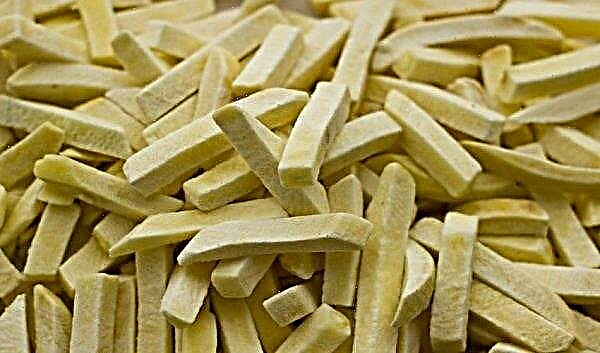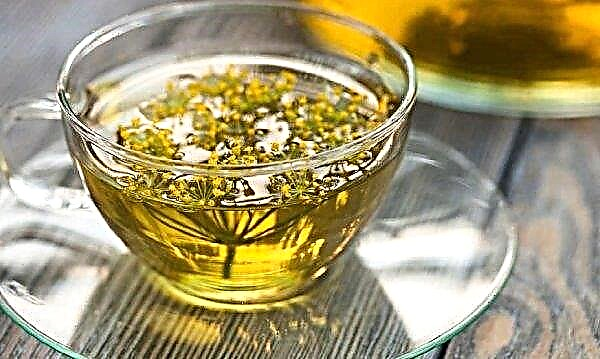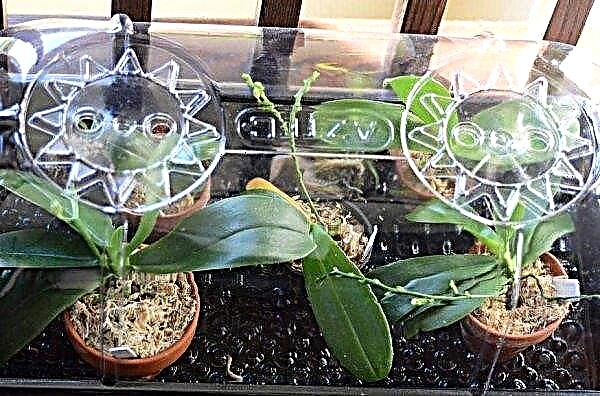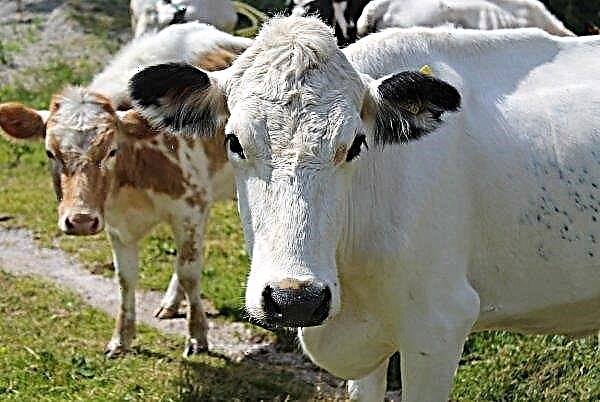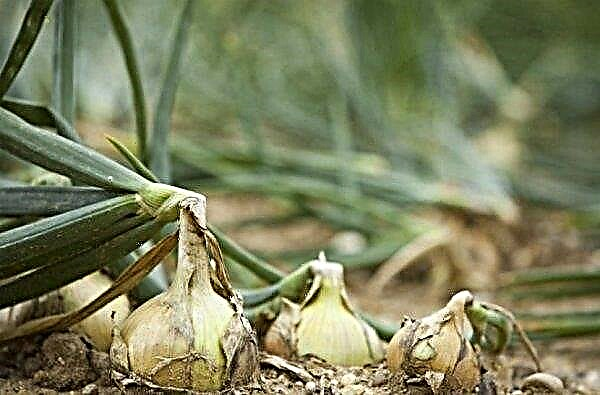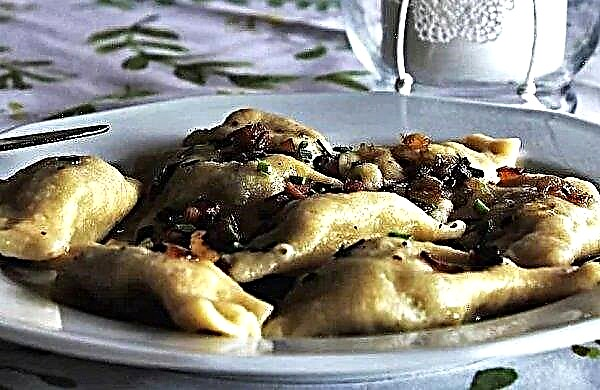A high crop of quality fruits is often prevented by the development of diseases and the attack of pests. The following describes the problems of this kind that can arise when growing eggplants, and methods to cope with them on a personal plot.
The main causes of disease in eggplant
A plant may become ill or be attacked by pests at different ages: in the seedling stage, after planting in open ground, during fruiting.
We can distinguish the following main causes of the disease:
- non-compliance with crop rotation conditions;
- unsuitable plot or conditions in the greenhouse;
- improper watering;
- errors in the composition of the fertilizer or its lack;
- adverse weather conditions.

The main diseases of eggplant and methods for their treatment
To reduce the degree of damage to the plant and the loss in yield, it is important to accurately determine the disease or source of problems and to begin treatment in a timely manner.
Viral
Viral disease can lead to a loss of up to 30% of the crop, and in some cases this indicator can grow up to 50%. Cool summers or frequent sharp fluctuations in temperature with high humidity are a favorable environment for eggplant viruses.
Since viral diseases are practically not treated, it is very important to monitor the condition of the site and fight insect vectors. Sick plants destroy and disinfect the entire garden tool.
Mosaic viruses
Tobacco mosaic noticeable light green or chlorotic mosaic spots along the veins of leaf plates, which are then necrotic. Some sheets become speckled, with brightened veins or wrinkled. The fruits of the diseased bush remain small and deformed. The virus is resistant to drought and remains dangerous for several years, transmitted with the remains of diseased plants and insects.

Cucumber mosaic demonstrates the alternation of light and dark green spots with the subsequent appearance of blisters and curls, also leads to deformation of inflorescences. In hot weather, the virus manifests itself in dwarf leaves, without showing spots. Symptoms are not visible on the fruit. It is transmitted by aphids and ticks, hibernates in the juice of infected perennials, and remains active in dry leaves for more than 100 days.

Ordinary or speckled mosaic appears on recently emerged leaves with a thin light green mottling, which later turns into small necrotic spots. It is transmitted mechanically by contact, including through the roots, as well as by insects and rodents. Waits for frost until spring in potato tubers.

Mosaic viruses often infect eggplants when transplanted, when plants are susceptible to mechanical damage through which the virus enters. Prevention of mosaics is the treatment of seeds with 20% hydrochloric acid for 30 minutes, after which it is necessary to rinse the seeds under running water. You can also buy already pickled seeds.
Did you know? Due to the content of nicotinic acid (Vitamin PP), the use of eggplant is recommended for smokers.
Stolbur (phytoplasmosis)
Usually affects plants in open ground. Sharp chlorosis and wilting of leaves are observed. Corrugation and cracking of the sheet plate, browning of the bark are possible. The internal tissues of the plant are very woody. The shoots and tops of the bush turn red and violet, the lower leaves turn yellow, and the veins from the inside turn purple.

Fruits are small, deformed and ligneous, hard inside. The virus is transmitted by cicadas and vaccinations in late summer and early autumn, and can persist in the rhizomes of perennial weeds. Due to the lack of resistant varieties, the careful destruction of weeds and the treatment of Actellic plants come to the fore.
Bacterial
Among the diseases caused by bacteria, the two most common.
Black bacterial spotting It affects plants both in the field and in the greenhouse, during the entire growing season. Black spots are found on leaves and stems at high levels of temperature and humidity, penetrating the stomata of the leaves and damage to the bark. Fruits are covered with convex points with a watery edge, which then become ulcers. Treatment is not productive and diseased specimens are destroyed. The use of pickled seeds, the burning of plant debris, and crop rotation are recommended.

Watery bacterial rot affects the fetus, starting with the appearance of oily spots. Then they cover most of the surface of the eggplant and rot, becoming gradually watery and slimy. The fruit rots, forming a dark brown mass with mucus and stench. Bacteria enter the fetus through damage, with insects and particles of affected tissue carried by the wind and rainfall. It is also possible contact infection of a healthy fetus from a patient during storage and transportation. Temperature + 1 ... + 2 ° C significantly slows down decay.

Since the bacterium is stored in the seeds and residues of diseased plants, infected fruits are destroyed. Prevention of the disease is proper crop rotation, careful handling of plants and fruits, drainage and the absence of excessive irrigation.
Important! Repetition of bacterial spotting on a single bed requires complete soil replacement in the greenhouse or soil disinfection.
Fungal
Treatment of plants with fungal infections is impossible due to the significant resistance of pathogens to most fungicides, therefore it is recommended to remove infected eggplants, and treat the soil and healthy specimens with the composition of the benzimidazole group. To avoid the disease, you should give preference to resistant varieties, disinfect the soil and seeds.
At the stage of growing seedlings, the plant lies in wait black leg (root rot rot). It is caused by fungi living in the upper soil layer, which, with high humidity and contact with the root neck, pass to the young sprout. Shoots are affected from the moment of germination to the age of appearance of 2-3 true leaves. After 4-6 days of illness, the blackened stalk becomes soft and breaks, the plant dies.

In addition to contaminated soil, an important role in the resistance of seedlings is played by thickening of crops, excessive humidity and stagnation of air. Sowing in sterile peat tablets also avoids the disease.
At the first symptoms, diseased specimens should be destroyed, and healthy ones should be transplanted into disinfected soil and shed with fungicide according to the instructions. Eggplants planted in open ground or a greenhouse most often suffer from the fungal diseases described below.
Late blight
Late blight affects all solanaceous crops, starting with leaves, where brown spots appear with a light green fringing and a whitish coating on the inside. Then the stems and fruits are affected. Eggplants are deformed, stained with hard rot, and eventually rot. High humidity and thickening are favorable for the development of the fungus, the peak of late blight falls in August.

Infection often occurs from potatoes and tomatoes, after 1-2 weeks. The fungus is stored in potato tubers and plant debris. For prophylaxis, spraying with fungicides or organic preparations is used, Bordeaux mixture and a solution of copper sulphate, the drugs "Concento", "Quadris" and "Antracol" are effective for treatment.
Sclerotinia
Sclerotiniosis (white rot) is caused by fungus from the soil and spreads throughout the plant, starting from the roots. White plaque is noticeable on the stem, and the inner part is compacted in places to form sclerotia (a dense cluster of filaments) softening, they block the nutrition of the bush.

Leaves and fruits become covered with wet dark spots, then the fruit softens and becomes covered with white spots with black sclerotia. Young plants are often sick, especially planted in cold and too damp ground.
The fungus lives in the soil up to 10 years. Treatment consists in the removal of affected parts with a dusting powder cut ash, processing with copper sulfate and Bordeaux mixture, complex feeding. Landings should not be thickened.
Important! The disease develops intensively during storage and can infect healthy fruits.
Anthractosis
Anthractosis is caused by two types of fungi with some difference in symptoms. Oval brown or dark gray spots with a blurry edge appear on the leaves.
Fruits can be covered with dark sunken spots of about 1 cm with numerous black sporulation pads of the mushroom or merging with deepened grayish-brown spots that capture most of the surface, with further cracking.

Both species are distributed by conidia, which form fungi on plant debris and in the soil. Infection is possible throughout the growing season. It is extremely important to observe crop rotation, eliminate thickening and dampness. Treatment is possible with special fungicides, copper preparations.
Dry rot
Dry rot (phomopsis) appears in hot and humid summers in the open ground, sometimes even under the shelter of a greenhouse. When the seedlings are affected, the sprout becomes bored and rotted, at a later date on the seedlings, wet ring rot forms on the stem near the root.
Adult bushes are covered on leaves with rounded spots with a clear edge, brown in color. The center of the spot is light, concentric zones are visible, where black dots - mushroom pycnids then grow. The same spots occur on the surface of the fetus, where fungal spores mature and stand out in the rain in the form of a ribbon mucosa, which is carried by rain, wind and insects.

The spots on the fruits rot and merge, become black or dark brown, as a result, soft rot covers the entire fruit. The disease continues to act during storage and transportation. The fungus remains on plant debris and in infected seeds.
For treatment, a Bordeaux mixture and fungicides based on prochlorase, mancozeb and chlorotolonil are used. Recommended selection of resistant varieties, seed treatment, careful removal of plant debris.
Gray rot
Gray rot (alternariosis) is identified by round brown spots on the leaves; wet pressed spots on fruits tend to increase the coating area, merge and soften. The fruit changes color from olive gray to black.

Usually, the fungus is introduced through mechanical wounds, cracks or burns, most often on the fruits in the lower part of the bush. Mostly affects varieties of late and medium ripeness. It is transmitted in plant debris and by insects, lives in soil for up to two years.
Prevention includes the destruction of infected plants, crop rotation, ventilation and maintaining moderate humidity. For treatment, copper and colloidal sulfur preparations, Phytosporin, Trichodermin, Chorus, and others are recommended.
Important! To disinfect the wooden parts of hotbeds or high beds, lime whitewash is used.
Cercosporosis
Cercosporosis affects leaves, stems and stalks with small, chlorotic round spots. After their growth, the leaves die off and fall off. The fruits of a diseased plant grow small and do not develop. The disease is transmitted by fungal spores through irrigation water, wind, and contaminated garden tools.

For prevention, adhere to the rules of crop rotation, avoid waterlogging and getting drops on the leaves. Plant resistance can be improved by timely complex dressing. Treatment: Bordeaux fluid, fungicides.
Withering
Fusarium and verticillosis - Varieties of tracheomycotic wilt in eggplant, of which the first is most dangerous. These diseases most often affect greenhouse plants during fruiting.
 Fusarium and Verticillosis
Fusarium and Verticillosis
Mushrooms penetrate from the soil into the stem, block the vessels and secrete toxins, causing toxicosis. Outwardly, this is manifested by leaf necrosis and a wilting bush, starting from the top. Possible infection through damage to the fetus. The spores of the fungus develop at a temperature of + 22 ... + 26 ° C and high humidity.
It is useless to treat wilting: affected plants must be destroyed immediately. Contaminated soil must be replaced, new - pickled with Trichodermin, Fitosporin-M, Trichophyt, Bordeaux fluid.
Pests
To control pests, appropriate insecticides are used, in the choice of which it is worth giving preference to drugs with a fast decomposition time.
Eggplant can be attacked by such insects:
- Colorado beetle, which is able to completely destroy the crop by eating leaves and stems of the bush. Sometimes it is harvested by hand, and in case of a massive defeat, they are treated with plantings by Aktara, Confidor and other insecticides;

- spider mite often attacks greenhouse beds and is first noticeable when carefully checking plants in bright sunshine. Then the leaves are covered with marble stains, and on their inside appears a spider web, under which ticks live. At the first symptoms, solutions of Fitoverm and Akarina are effective, overgrown colonies are treated with Aktara, Aktellik, Karbofos;
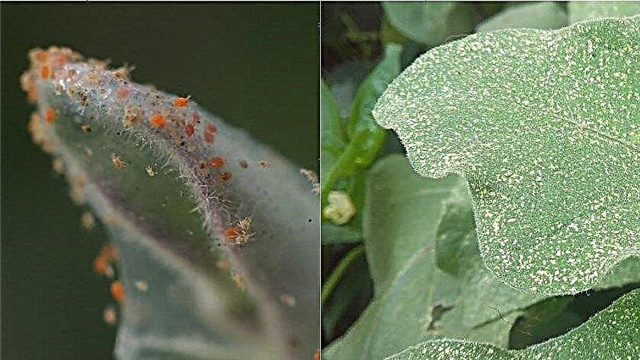
- the appearance of aphids eating juice of all parts of the plant, leads to a significant lag in growth, curving shoots and the death of leaves. Recommended treatment by “Aktara”, “Fitoverm”, “Fosbetsidom”;
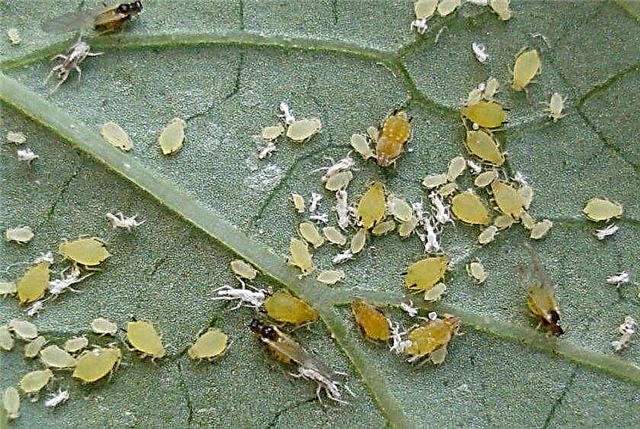
- whitefly - a small butterfly, which, together with its larvae, harms mainly greenhouse seedlings. A sign of whitefly will be a layer of sweetish characteristic discharge on the plant, where then a black coating will appear. Such a sheet curls, blackens and dies. Butterflies are caught on special baits, as well as sprayed with Actellik, Confidor, and others;
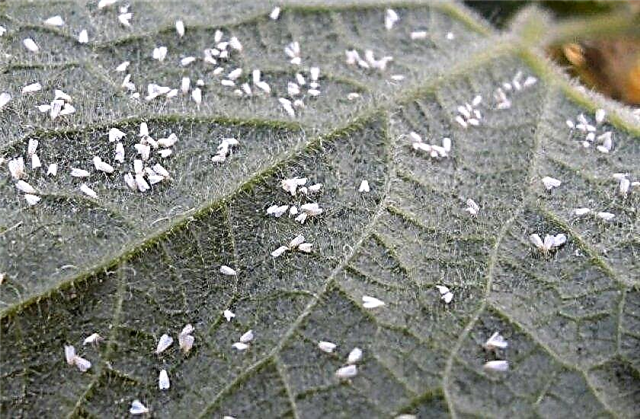
- the bear and its larvae damage the root system of the bush. Gardeners have developed many traps and ways to deal with this pest, including poisonous baits. It is also worth paying great attention to preparing the soil for the bed, choosing larvae from it during digging;
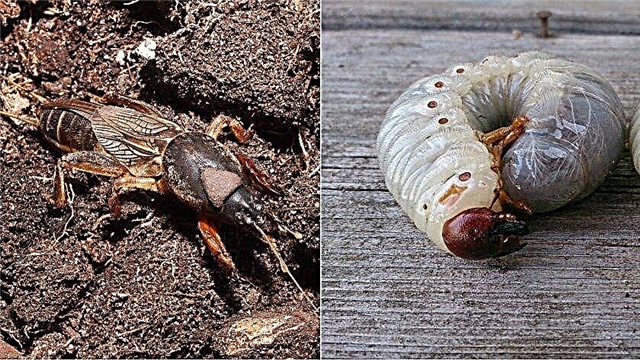
- winter scoops - caterpillars that attack young eggplants; then the bushes are easily infected with other diseases. Larvae hibernate in the soil and gnaw a thin, fragile stem in spring. Prevention is loosening the soil after wetting, weed control. In advanced cases, they use Karbofos, Inta-Vir, Kinmiks.
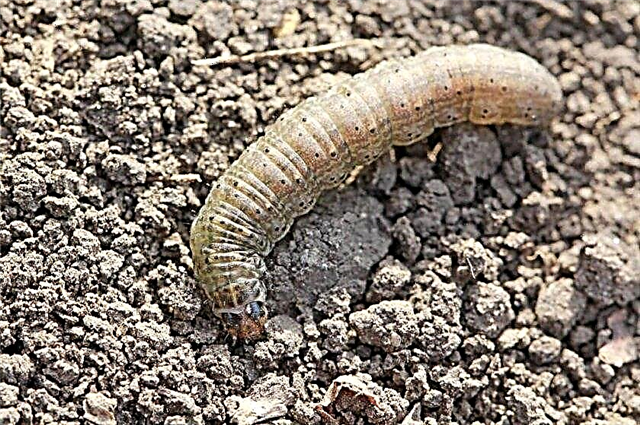
Prevention methods
The necessary measures to prevent diseases and pests are:
- presowing treatment of seeds or the use of finished pickled material;
- application of crop rotation rules for solanaceous crops;
- soil disinfection in various ways; for example, copper preparations;
- sufficient distance between plants;
- proper watering and top dressing;
- timely treatment, destruction of plant debris, cleanliness of the greenhouse and weed control.
How to grow eggplant without disease and pests
By adhering to the following agrotechnical rules, you can significantly reduce the likelihood of eggplant disease in a household plot. The right variety and agricultural technology allows you to get a good harvest with almost no chemistry.
Did you know? The eggplant fruit is a berry according to a botanical definition, but in cooking it is considered a vegetable.
Location
Replant eggplants on the same bed is possible only after 3-5 years. You can not plant them after other solanaceous, and the best predecessors will be legumes, melons, cabbage, carrots and onions. The interval between the bushes should be 50-60 cm. Planting seedlings should occur with steady heat in the root layer (minimum + 15 ° C).

Grade selection
For a good harvest, it is necessary to pay attention to zoned varieties with group resistance to diseases. The best indicators are modern hybrids, which differ in color and shape, as well as ripening time.
Among the sustainable and productive varieties, the following are distinguished:
- Epic F1;
- Globular;
- Black handsome;
- Japanese dwarf;
- Diamond.
Care
The following care tips will help you get a good harvest:
Check out

- eggplant seedlings are grown without diving and should not outgrow, the maximum time before planting in the garden is 70 days;
- eggplants do not like the increased acidity of the soil - pH can be reduced by adding lime, chalk or ash to the bed;
- in the first weeks after planting, plants need protection from drying out and the bright sun, so they should be covered with agrofabric at a height of 30-40 cm;
- watering is performed under the root, avoiding drops falling on the leaves;
- during the growth period, it is necessary to feed the bushes 3 times: before flowering, during the formation of fruits, as well as during fruiting. Both biological and chemical complex mixtures can be used;
- bushes need timely pinching and pruning of the lower leaves;
- conducting a permanent inspection allows you to identify a diseased plant in time and remove it;
- Folk processing solutions from the Colorado potato beetle can also be effective against aphids and spider mites. The composition includes crushed dandelion leaves, onions and garlic (in a glass), which are then diluted with 10 liters of water from 1 tbsp. a spoon of soap. After insisting for 2-3 hours, the bushes are sprayed with a solution.
The cultivation of eggplant requires attention and careful observance of agricultural technology. Timely diagnosis and preventive measures can minimize the damage caused by planting diseases and pests.








